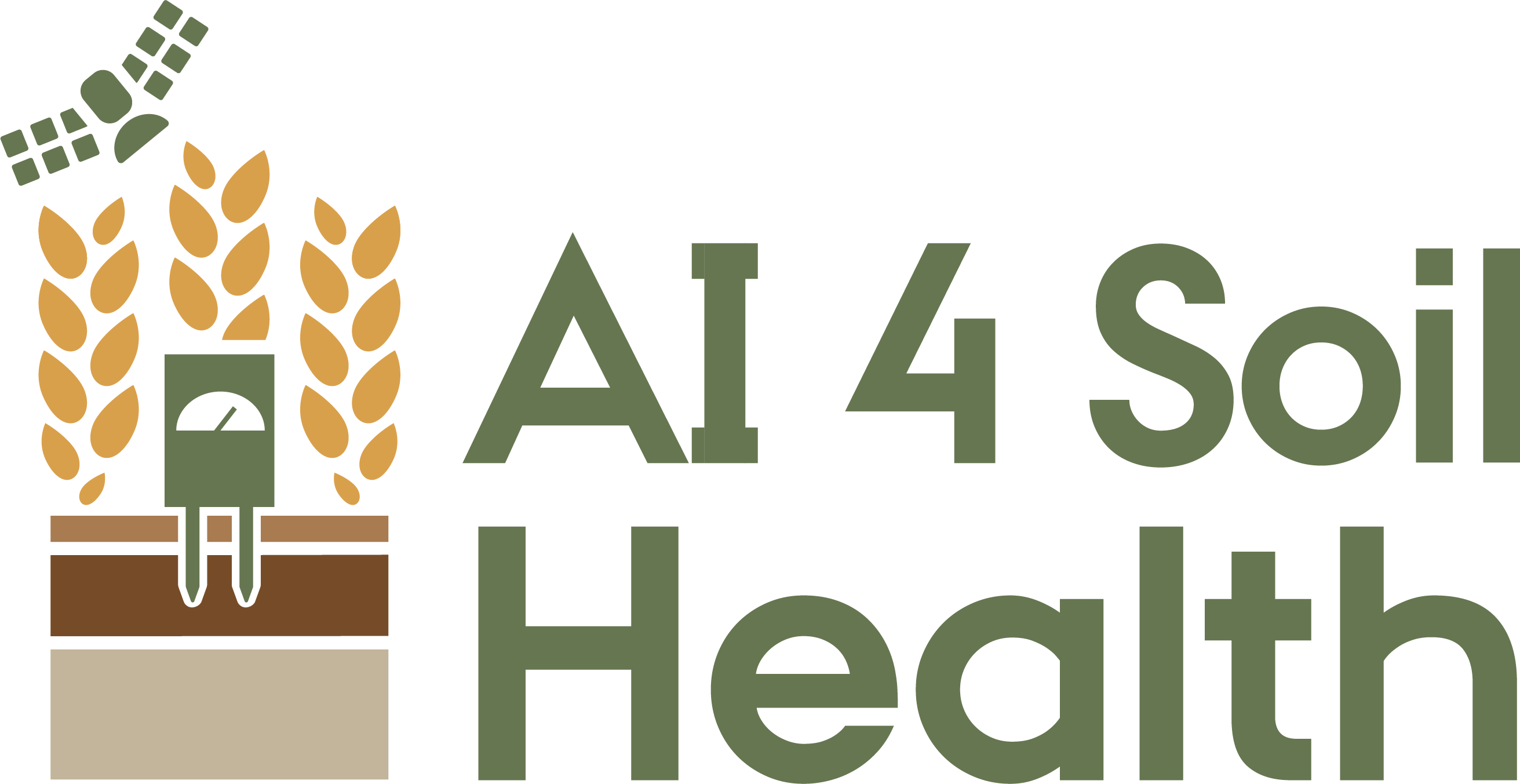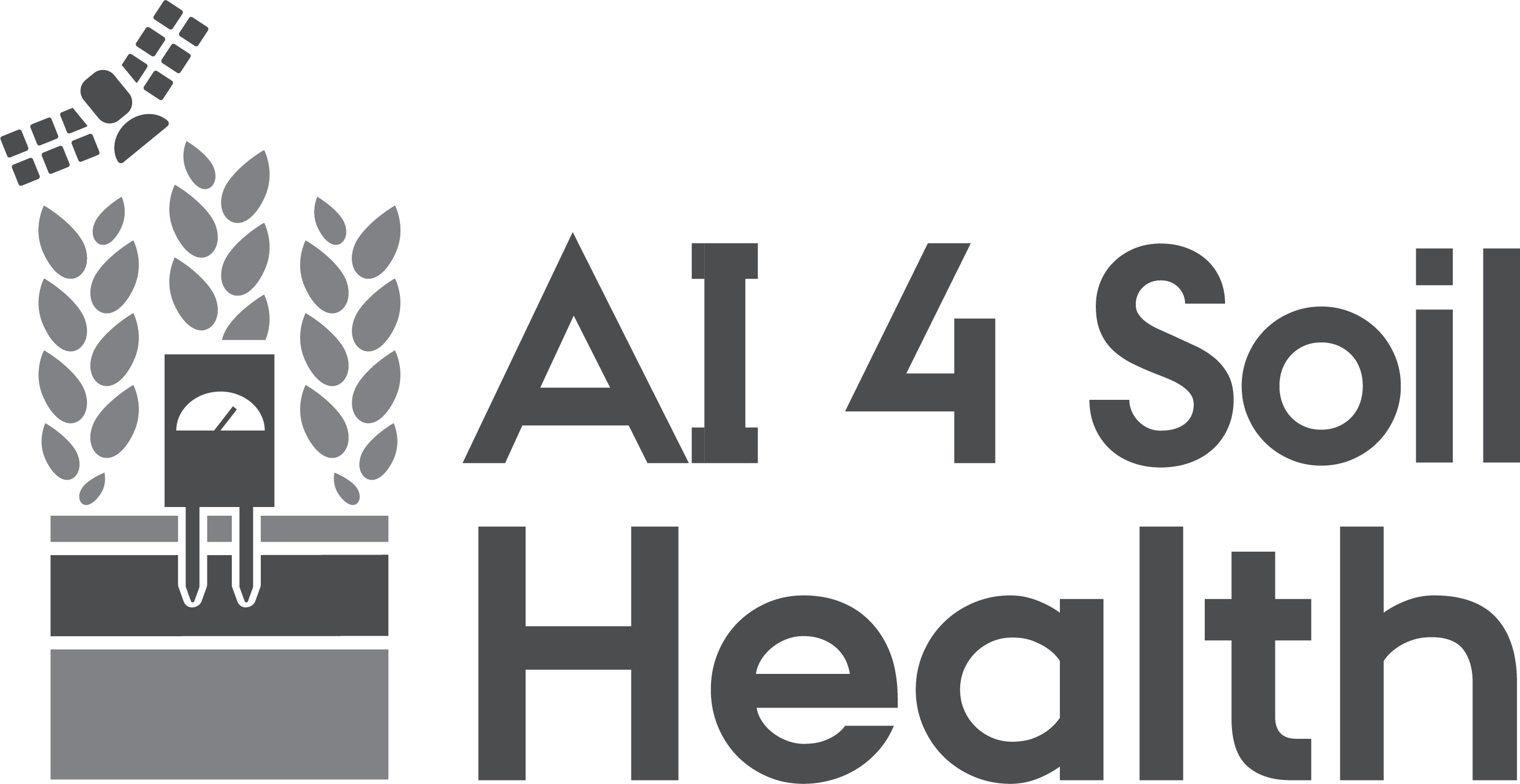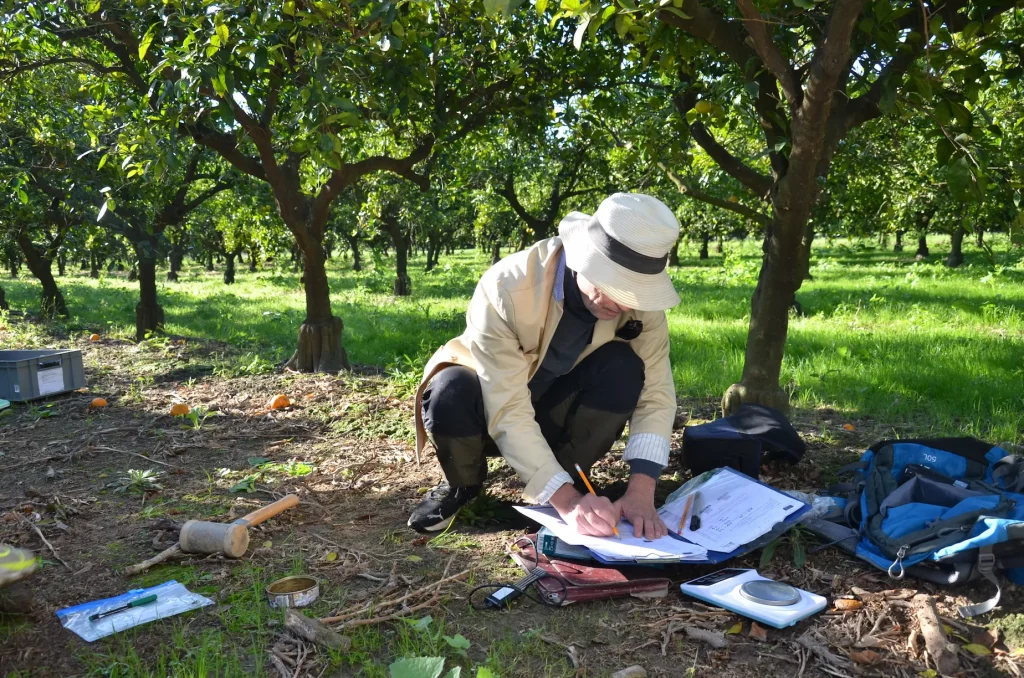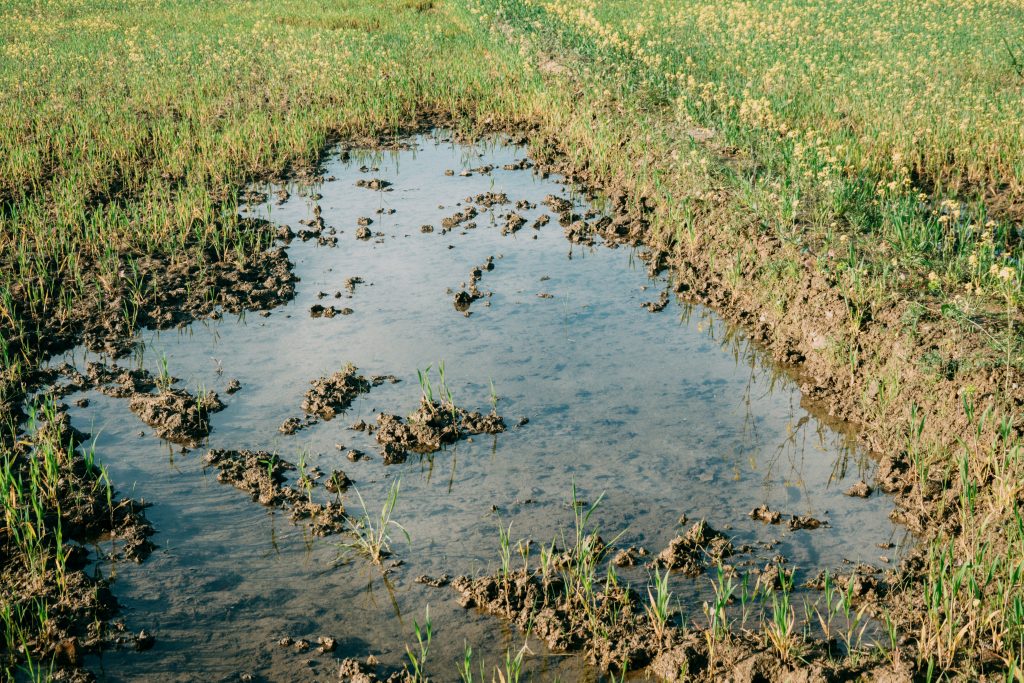Recently, a team of experts and volunteers from the Soil Association visited Woodoaks Farm, in Hertfordshire, England, as part of the AI 4 Soil Health project. Over three days, the team used new tools and technology to sample soil on the farm, a Soil Association pilot site under conversion to organic farming. The team collected soil samples at 11 points on site, using AI 4 Soil Health project protocol, and gathered data on land management and vegetation.
The soil data collected will feed into AI 4 Soil Health’s Soil Health Data Cube, designed to support soil health management across Europe by harnessing AI technology to help pan-EU mapping and tools. This includes a prototype app that can inform soil health management policy and practices.
Karen Fisher, Farming Advisor and Katy Jo Stanton, Senior Farming Advisor in Soil Health at the Soil Association explore how work at Woodoaks and across AI 4 Soil Health plays a key role in raising awareness of and protecting Europe’s soils.
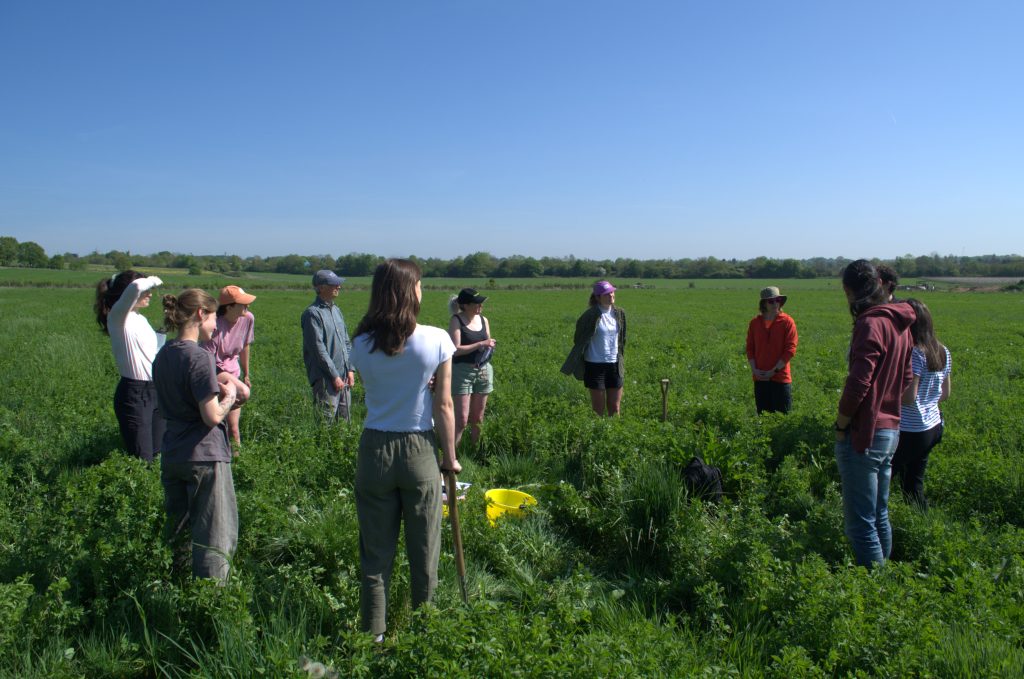
What is the AI4SoilHealth project and how is it relevant to farmers, land managers and project managers in the UK?
AI 4 Soil Health is a Horizon Europe-funded project focused on reversing soil degradation by giving policy makers, farmers and land managers advanced tools to understand, monitor and improve soil health. The project brings together researchers and practitioners across Europe to co-develop open access, data-driven tools that support management of healthier, more resilient soils.
At its heart is a data cube platform supporting a free prototype app, that uses artificial intelligence and the latest measurement techniques to support policy level and practical on-farm decision-making. Pilot sites, as key local stakeholders, are contributing to its design and development. Within the AI 4 Soil Health project, pilot sites are a collaboration of advisors, academics, researchers, farmers and land managers across Europe, that help us look at the practicalities of what they need and test out what is achievable and understandable in a farming or land management context.
The project is gathering national data sets and soil data from pilot sites across Europe and the UK, including Soil Association’s Woodoaks pilot site, to contribute to robust, regionally relevant modelling across the project. It’s also working to build a community of practice – testing AI 4 Soil Health tools, sharing stories, techniques and learnings across pilot sites. This also joins up with the EU Soil Mission Projects and its growing network of Living Labs – collaborative spaces where citizens, businesses, farmers, growers and researchers, co-create, test, and validate new ideas, products, and services.
AI 4 Soil Health, and projects like it, are a great opportunity for us in the UK to stay connected with the latest innovations in soil monitoring. Our challenges in soil degradation – such as compaction, erosion, and declining organic matter – are shared with our EU colleagues, but so are the tools and knowledge to tackle them. We get to explore new ways to improve soil resilience, boost productivity, and reduce environmental impact using evidence-based, forward-thinking approaches through research projects like this.
Why is the Soil Association involved in a European project like AI 4 Soil Health?
The Soil Association is involved in AI4SoilHealth because we believe innovation is key to improving how we understand, manage, and protect soil. As pressures on land increase, farmers and land managers need better tools — not just to measure soil health, but to act on that knowledge in ways that are practical, affordable, and effective.
Traditionally, soil testing has relied heavily on sending samples off to labs. That still has an important role. But new technologies are now making it possible to carry out more in-field assessments and real-time monitoring. Combined with mapping tools and data modelling, this means farmers and land managers can make quicker, more informed decisions, while integrating lab results into their broader soil management strategies and funding regimes.
Being part of AI4SoilHealth allows us to contribute to these innovations across Europe with brilliant project partners; it’s about staying connected to cutting-edge science while ensuring that solutions are grounded in the realities of farming and land management.
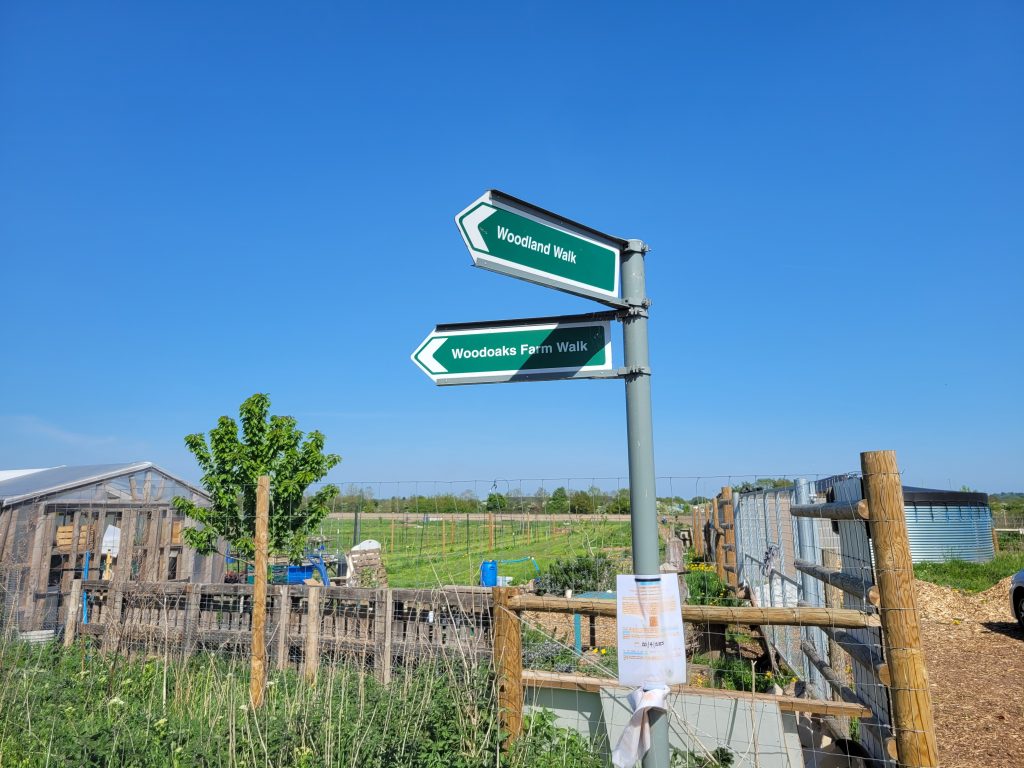
Can you tell us about Woodoaks and how work there is helping AI 4 Soil Health?
Woodoaks was intensively managed as an arable farm before it was given to the Soil Association Land Trust and is now under conversion to organic. They are carrying out significant conservation and agroecology activities, integrations with their local communities, and carrying out many practices to regenerate soil health on the farm. It’s useful to support Woodoaks with wider soil health benchmarking data, to look at how practices and an organic focus on the farm now will improve soil health over time.
How has soil sampling changed over time?
Soil is a composition of chemical, physical and biological factors. Soil biology is often best measured in-situ due to it being a living ecosystem, which has historically created challenges with measurement and monitoring. In-field monitoring and testing tools and techniques have become widely available, alongside lab testing, which has improved the inclusion of soil biological factors in our overall picture of soil health.
From a practical point of view, historically farmers looked at soil health to see what fertiliser they needed to add or the PH, potash and magnesium levels to address in basic soil sampling. Now, there’s a lot more interest in looking at biological factors, organic amendments and measuring organic matter, which wasn’t as common in the recent past. We are gaining more understanding of the soil microbiome, the fungi-bacteria ratios, macrofauna and microorganisms, their roles and interactions, their importance and therefore how to design and balance organic amendments and soil management techniques for balanced chemical, physical and biological soil health.
Why are large scale monitoring programmes important?
Farmers and land managers can add the results from their land to contribute to a wider pool of knowledge if they want to, which benefits themselves and others. Quite often, it’s contextual in farming. You can benchmark against similar areas, in terms of crops, weather patterns, soil, etc.
They give us the big-picture insight needed to understand where soils are degrading and why. Across the EU and UK, significant areas of soil are under pressure – from everything from compaction to loss of organic matter – and the effects aren’t always visible until productivity declines or flooding worsens. Coordinated monitoring helps identify risks early, supports better land use decisions, and ensures we can track progress over time.
This helps us shape stronger policies and relevant funding and supports effective land management and targeted interventions. It also lays the groundwork for innovation, by identifying research gaps and enabling tools and strategies to develop, that support healthy, resilient soils into the future.
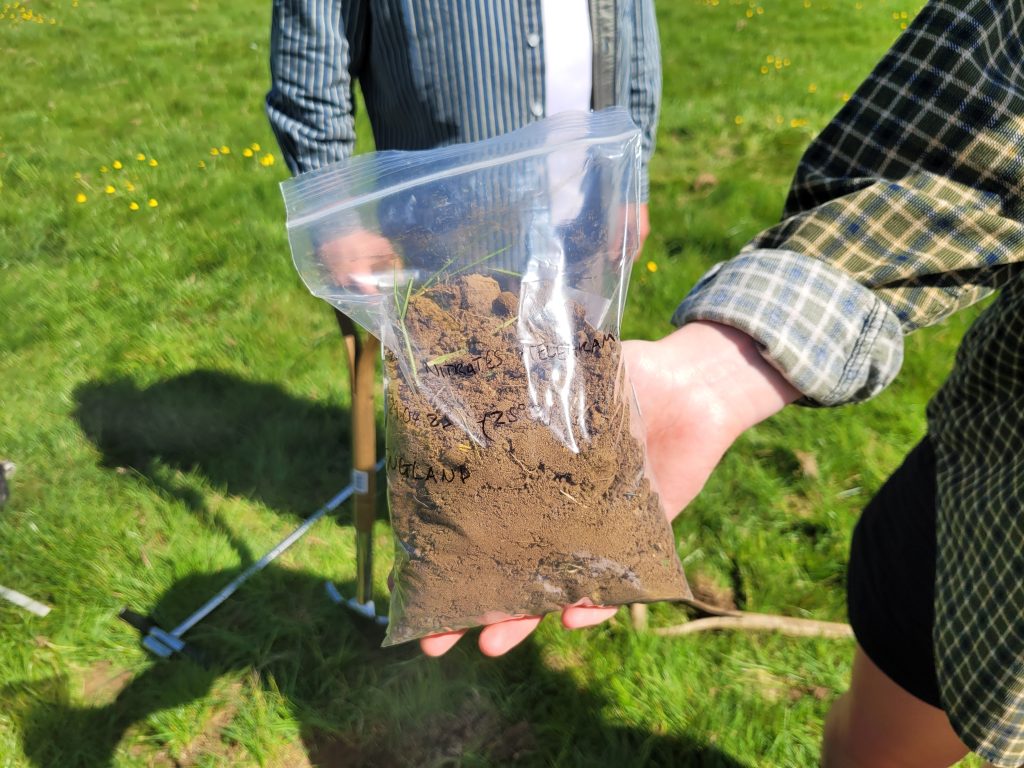
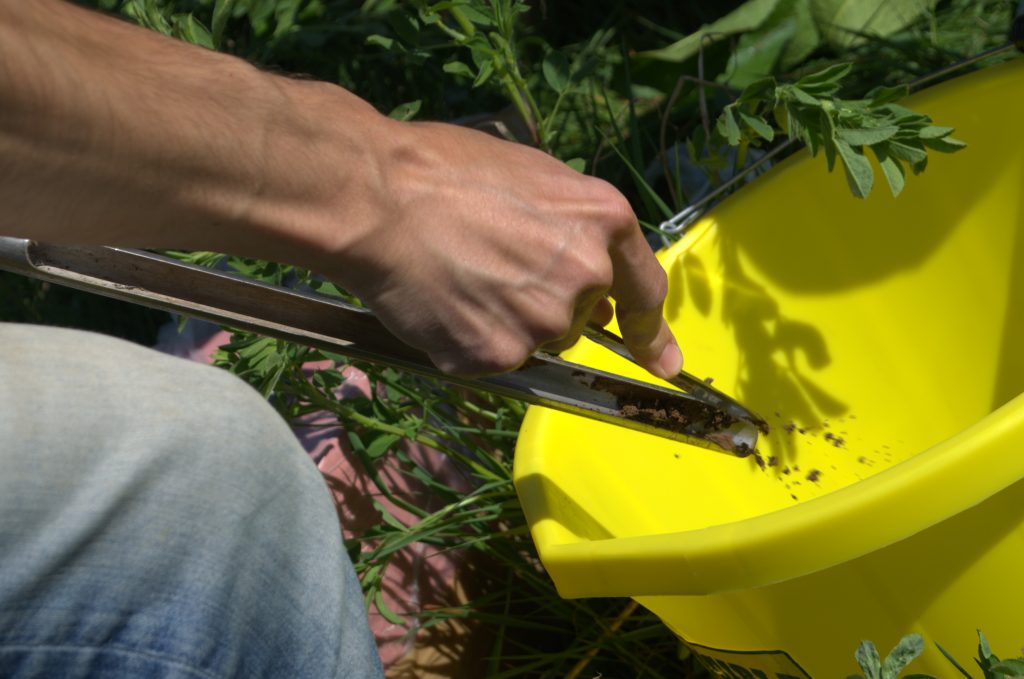
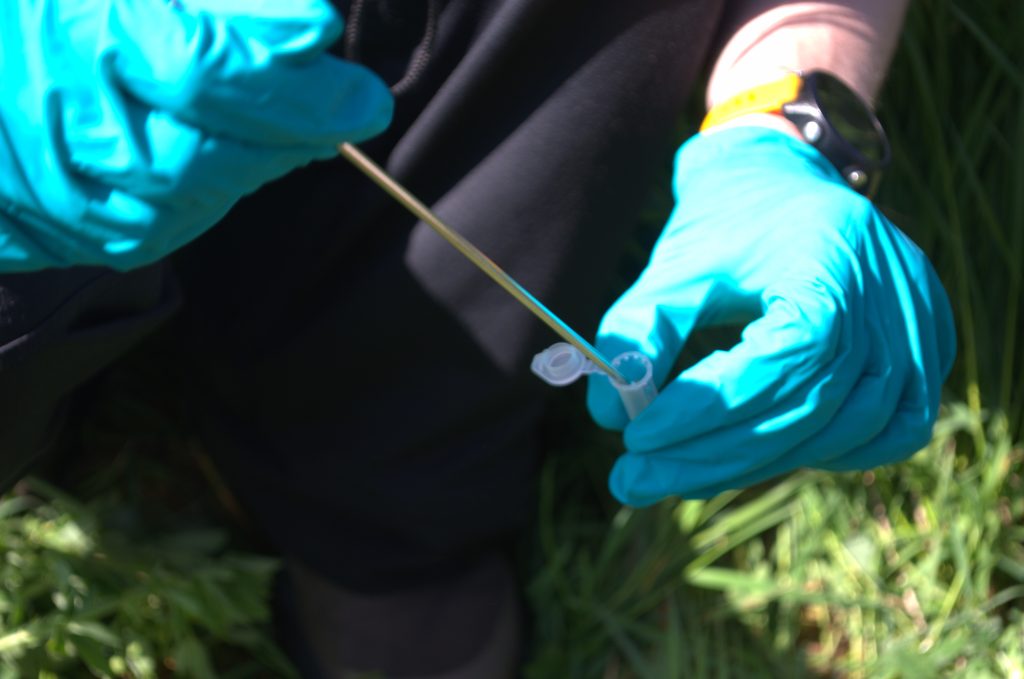
Why is it important to empower farmers and land managers to carry out on farm testing?
It shortens timescales, as farmers and land managers don’t have to send soil samples to laboratories and wait to receive the results. It also – literally – puts soil health analysis in their hands. It empowers them to engage with the soil – to feel it, assess it and understand it better.
Empowering farmers and landowners with in-situ testing tools fosters immediate, informed decisions about soil management and can reduces reliance on external laboratories alone, enabling more targeted monitoring investments, which can often save time and costs longer term. It encourages proactive practices that improve soil health and productivity through an on-the-ground ability to make informed decisions in real-time. This autonomy is vital for adapting to local conditions and implementing effective soil management practices.
What is the Soil Health Monitoring Law and how might it be relevant to the UK?
The EU Soil Health Monitoring Law, agreed in April 2025, is the first of its kind to set legal standards for assessing and improving soil health across member states. Its goal is for all EU soils to reach a healthy condition by 2050, supporting broader environmental targets like the European Green Deal.
Member states will be required to monitor soils using a consistent set of indicators – covering physical, chemical, and biological aspects – and report on health status, risks, and contamination. There’s flexibility for national implementation, but a shared framework ensures comparability and accountability.
While the UK is no longer a member of the EU, the implications of this law are still significant and set a precedent for including soil as a key environmental concern along with air and water quality. UK policymakers and landmanagers may consider aligning with these standards to address soil degradation across the UK. Adopting similar soil health monitoring practices can contribute to the UK’s own environmental and agricultural objectives, promoting sustainable land management, food security and resilience against climate change impacts.
Policymakers in the UK can also benefit from the science around soil health monitoring. Robust soil health data, derived from consistent measurement practices, provides policymakers with the evidence needed to create stronger, more targeted agricultural and environmental policies that are inclusive of soil. By highlighting where degradation is occurring, what’s driving it, and which interventions are effective, this data supports the development of regulations, funding schemes, and long-term land use planning. Accurate, accessible monitoring at scale—demonstrated through projects like AI 4 Soil Health—shows how large datasets can inform place-based solutions that reflect the complexity of UK landscapes and challenges, moving beyond one-size-fits-all approaches. This also strengthens the case for investing in soil recovery, nature-based solutions, and climate resilience, ensuring that public funds deliver meaningful impact for people, food, and the environment.
A lot of the tools being used at Woodoaks are to assess soil biology. Can you explain why understanding soil biology is so important and its potential for soil health strategy in the future?
Soil biology, encompassing microorganisms like bacteria and fungi, is fundamental to nutrient cycling, organic matter decomposition, and overall soil fertility. Our scientific understanding of it is still developing, but we have begun to understand it’s functional importance. Comparable to the human gut, soil microbiome health, as with human health, needs the right balance of microrganisms to function effectively. Evidence shows the more diverse the soil microbiome is, the stronger and more diverse the range of plants that can grow there, and the less likely they are to be at risk of disease. The soil microbiome also supports the structure of the soil and its water holding capacity.
What excites you about the future of soil health monitoring?
That we can monitor the health of the soil in real time and have a deeper insight into the ecological part of the soil. We’re not just testing chemistry, now we can get a better understanding of soil by measuring the living part of it. In terms of AI 4 Soil Health, I’m excited about expanding the database so farmers and landowners can benchmark against other similar systems.
What’s exciting is the shift from reactive to proactive land management. With emerging technologies like AI, in-field sensors, and geospatial tools, we now have the ability not just to benchmark soil health, but to build predictive insights that help anticipate local challenges like drought, flooding or nutrient loss.
This means land managers and farmers can make more informed management decisions with a more holistic view, adapting practices in real time and planning for extremes before they hit. It’s not just about measurement; it’s about giving farmers and landowners the tools to respond to their local challenges, manage their risks, and build long-term soil health with confidence.
